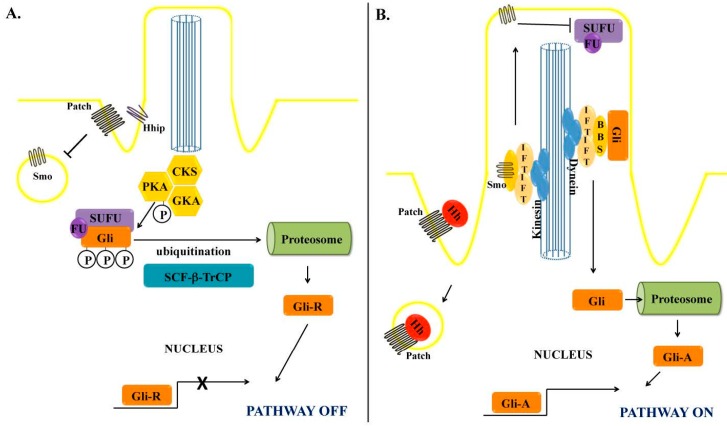Figure 1.
Hedgehog signaling pathway and the primary cilia. (A) In the absence of Hedgehog (Hh) ligand, Gli localizes in the cytoplasm as part of an inhibitory complex with Fused kinase (Fu) and Suppressor of Fused (SuFu), which allows the sequential phosphorylation by several kinases: Protein kinase A (PKA), glycogen synthase-3β (GSK3β) and casein kinase-1 (CK1). Thereafter, ubiquitination by Skip-Cullin-F-box (SCF) protein/β-Transducing repeat Containing Protein (TrCP) primes the phosphorylated Gli to limited proteosomic degradation, exposing the N-terminal repressor domain (GliR), which translocates to the nucleus and represses; (B) When Hh ligand binds to Ptch, it releases the inhibitory effect of Ptch on Smo that localizes in cytoplasmic vesicles. Smo then undergoes anterograde movement along the cilia, directed by kinesin and facilitated by the ciliary proteins Bardet-Biedl syndrome proteins (BBS) and intraflagellar transport proteins (IFP). At the tip of the cilia, Smo releases Gli from the suppressor complex, allowing it to move along the cilia, directed by dynein proteins. Unphosphorylated Gli undergoes limited proteosomal degradation, exposing the C-terminal activator domain (GliA), which translocates to the nucleus promoting gene transcription.

